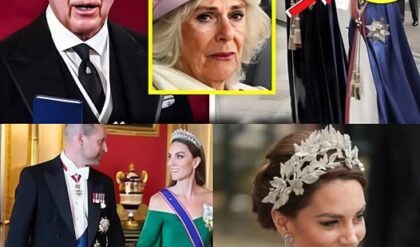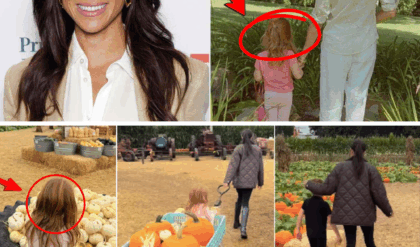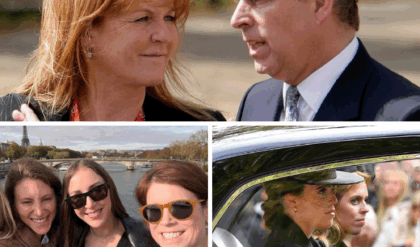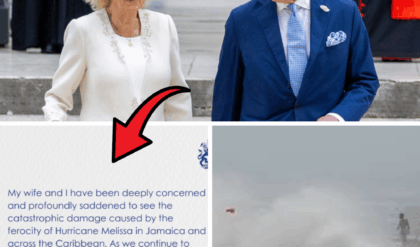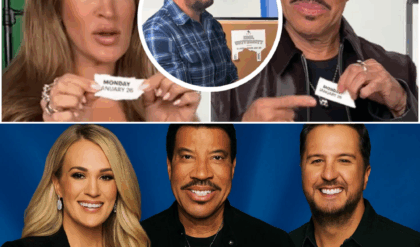Jodie Foster, a name synonymous with cinematic brilliance, has carved an indelible mark on Hollywood with her powerful performances in films like The Silence of the Lambs and Taxi Driver. Yet, long before she became a two-time Oscar winner and a queer icon, Foster was a child actor navigating the bustling world of television. Among her early roles, her appearances on the legendary Western series Gunsmoke stand out as a fascinating chapter in her journey to stardom. Between 1969 and 1972, Foster guest-starred in three episodes of Gunsmoke, each time portraying a distinct character. These roles, though small, showcased her natural talent and hinted at the remarkable career that lay ahead. This article explores Foster’s contributions to Gunsmoke, the context of her performances, and how these early experiences shaped her path to becoming one of Hollywood’s most respected figures.
A Child Star in the Making
Born Alicia Christian Foster on November 19, 1962, in Los Angeles, Jodie Foster entered show business at an astonishingly young age. At three, she began modeling, famously appearing in a Coppertone sunblock commercial. By five, she made her television debut in a 1968 episode of Mayberry R.F.D., kicking off a prolific career as a child actor. Throughout the late 1960s and early 1970s, Foster was a familiar face on TV, guest-starring in shows like The Doris Day Show, Adam-12, Bonanza, The Partridge Family, and The Courtship of Eddie’s Father. Her versatility and poise set her apart, even among other child actors. It was during this period that Gunsmoke, CBS’s iconic Western series, became a significant platform for her budding talent.
Gunsmoke, which ran from 1955 to 1975, was a cultural juggernaut, holding the record as the longest-running Western series in television history with 635 episodes across 20 seasons. Set in Dodge City, Kansas, during the 1870s, the show followed U.S. Marshal Matt Dillon (James Arness) and his efforts to maintain law and order in a gritty frontier town. Known for its nuanced storytelling and strong ensemble cast—including Amanda Blake as saloon owner Kitty Russell and Milburn Stone as Doc Adams—Gunsmoke attracted a roster of guest stars, from established legends like Bette Davis to rising talents like Harrison Ford and Jodie Foster. For a young Foster, appearing on Gunsmoke was both a professional milestone and an opportunity to shine in a prestigious production.
Foster’s First Gunsmoke Role: Susan Sadler in “Roots of Fear” (1969)
Foster’s Gunsmoke debut came at age seven in the season 15 episode “Roots of Fear,” which aired on December 15, 1969. She played Susan Sadler, the young daughter of a struggling farming family facing financial ruin. The episode centers on Amos Sadler (John Anderson), a dirt farmer whose dream of owning a farm is jeopardized when a bank panic in Dodge City traps his savings. Desperate to secure the property, Amos and his wife, Emilie (Louise Latham), contemplate robbing the bank, with their children, including Susan, caught in the emotional fallout. While Foster’s role as Susan was not the episode’s focal point, her presence was impactful. Her wide-eyed portrayal conveyed the innocence and vulnerability of a child grappling with her family’s dire circumstances, adding emotional weight to the story. Critics and fans later noted that even in this small part, Foster displayed a natural gravitas that belied her age.
“Roots of Fear” was a quintessential Gunsmoke episode, blending moral dilemmas with the harsh realities of frontier life. Foster’s performance, though brief, caught the attention of the show’s producers, who recognized her potential. This initial appearance marked the beginning of her recurring relationship with the series, setting the stage for more substantial roles in later seasons. For Foster, working on Gunsmoke offered early exposure to complex narratives and seasoned actors, invaluable experience for a young performer.
A Heartwarming Holiday Tale: Patricia in “P.S. Murry Christmas” (1971)
Foster returned to Gunsmoke two years later in the season 17 episode “P.S. Murry Christmas,” which aired on December 27, 1971. At nine years old, she played Patricia, one of seven orphans living at the Pawnee County Orphanage under the strict guardianship of Emma Grundy (Jeanette Nolan). This episode, the series’ second and final Christmas-themed story, is a standout for its heartwarming narrative and stellar cast of child actors, including Erin Moran (Happy Days), Willie Aames (Eight is Enough), and Todd Lookinland (brother of The Brady Bunch’s Mike Lookinland). The plot revolves around the orphans’ rebellion against Grundy’s joyless regime. When Grundy fires the kindly handyman Titus Spangler (Jack Elam) over a trivial matter, the children flee with him to Dodge City, seeking a proper Christmas celebration.
In Dodge, the orphans find warmth and support from Matt Dillon, Kitty Russell, and the town’s residents. The episode avoids saccharine sentimentality, instead exploring Grundy’s complex motivations—she suppresses Christmas festivities to shield the children from the pain of unfulfilled expectations, a reflection of her own troubled past. Foster’s role as Patricia is relatively minor, with her character blending into the ensemble of orphans. Still, her expressive performance adds depth to the group’s collective yearning for joy. The episode’s emotional climax, where Grundy’s heart softens, is elevated by the children’s authenticity, with Foster’s subtle reactions contributing to the tender mood. Notably, “P.S. Murry Christmas” also features the first on-screen kiss between Matt Dillon and Kitty Russell, a fleeting but historic moment after 17 seasons of romantic tension.
The episode’s cast of future stars made it a “who’s who” of 1970s child actors, and Foster, though not the standout, held her own among peers who would later achieve fame. Her work in “P.S. Murry Christmas” demonstrated her ability to adapt to ensemble dynamics, a skill that would serve her well in her later film career. The episode remains a fan favorite for its holiday charm and the early glimpse it offers of Foster’s talent.
A Final Appearance: Marieanne Johnson in “The Predators” (1972)
Foster’s third and final Gunsmoke appearance came just five episodes after “P.S. Murry Christmas,” in the season 17 episode “The Predators,” aired in 1972. She portrayed Marieanne Johnson, the red-headed daughter of recurring character Abelia Johnson (Jacqueline Scott). Interestingly, the role of Marieanne had previously been played by Susan Olsen (The Brady Bunch), highlighting Gunsmoke’s practice of recasting child roles. In “The Predators,” Marieanne is a peripheral figure in a story about a family navigating threats from human and animal predators in the wilderness. Foster’s performance, though limited in scope, brought a quiet strength to Marieanne, reflecting the resilience of a child raised in a harsh frontier environment.
Of her three Gunsmoke roles, “The Predators” gave Foster the least to do, as the episode focused more on adult characters and action-driven conflicts. However, her presence added continuity to the recurring Johnson family storyline, and her ability to embody a different character from her previous appearances showcased her versatility. By this point, Foster was on the cusp of major film roles, and her Gunsmoke stint was nearing its end. Nevertheless, her final appearance underscored her growing confidence as a performer, even in understated parts.
The Significance of Foster’s Gunsmoke Roles
Foster’s three Gunsmoke appearances—Susan Sadler, Patricia, and Marieanne Johnson—were brief but meaningful stepping stones in her career. At ages seven to nine, she demonstrated an uncanny ability to convey emotion and adapt to varied roles, from a distressed farmer’s daughter to a hopeful orphan to a frontier child. These performances, while not headline-grabbing at the time, impressed Gunsmoke’s casting directors, who chose her over other child actors for multiple roles. The show’s producers clearly saw her “something special,” a quality that would soon propel her to international fame.
Working on Gunsmoke exposed Foster to a professional set environment, where she interacted with industry veterans like James Arness, Amanda Blake, and guest stars like Jack Elam and Jeanette Nolan. These experiences honed her craft and prepared her for the demanding roles that followed. By 1976, just four years after her final Gunsmoke episode, Foster earned an Oscar nomination for her chilling performance as a child prostitute in Martin Scorsese’s Taxi Driver. That same year, she starred in Bugsy Malone, Freaky Friday, and The Little Girl Who Lives Down the Lane, cementing her status as a prodigious talent. Her Gunsmoke roles, though modest, were part of the foundation that enabled her to tackle such complex characters with ease.
Moreover, Foster’s Gunsmoke appearances reflect a broader trend of child actors using television as a springboard to film stardom. Like contemporaries such as Ron Howard, who also guested on Gunsmoke, Foster leveraged her TV work to build a reputation for reliability and skill. Gunsmoke’s prestige and wide viewership gave her visibility, even in small roles, and its Western genre allowed her to explore diverse emotional landscapes, from fear to hope to resilience.
Foster’s Reflections and Legacy
Despite her early success, Foster has spoken candidly about the uncertainties of a child actor’s career. During a 2024 True Detective Q&A, she recalled her mother’s skepticism about her longevity in acting, encouraging her to consider careers in law or medicine. “I never thought I’d be an actor when I grew up,” Foster said, noting the prevailing belief that child actors rarely transitioned to adult roles. Yet, Foster defied those odds, evolving into one of the most acclaimed actors and filmmakers of her generation, with a career spanning over six decades.
Her Gunsmoke roles, while minor in the grand scope of her filmography, are cherished by fans of the series and classic TV enthusiasts. Episodes like “P.S. Murry Christmas” remain accessible on streaming platforms like Paramount+ and Pluto TV, offering modern audiences a chance to see a young Foster in action. These performances are a testament to her early potential and a reminder of Gunsmoke’s role in nurturing talent. The series’ enduring popularity, coupled with Foster’s later achievements, ensures that her Dodge City appearances remain a point of interest for scholars and fans alike.
Conclusion
Jodie Foster’s three Gunsmoke roles—Susan Sadler in “Roots of Fear,” Patricia in “P.S. Murry Christmas,” and Marieanne Johnson in “The Predators”—represent a formative phase in her extraordinary career. At a time when she was still finding her footing in Hollywood, these guest spots showcased her innate talent and versatility, qualities that would define her later work. Gunsmoke provided a prestigious platform for Foster to hone her craft, surrounded by seasoned professionals and compelling stories. While these roles were small, they were significant in building the foundation for her rise to fame. Today, as Foster continues to captivate audiences with projects like True Detective: Night Country, her early days in Dodge City serve as a charming reminder of the child star who became a cinematic legend. For those eager to revisit her roots, Gunsmoke’s timeless episodes offer a glimpse of a young Jodie Foster, already destined for greatness.
